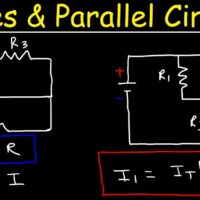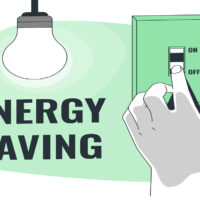Yes, cable management matters significantly. It improves organization, safety, and efficiency in any environment.
Cable management plays a crucial role in maintaining a neat and organized workspace. Properly managed cables reduce the risk of accidents, such as tripping or electrical fires. It also enhances the overall appearance of your setup, whether in an office or at home.
Efficient cable management ensures that devices function optimally by preventing tangles and damage. It can also prolong the lifespan of your equipment by reducing wear and tear. Investing time in cable management can lead to a more productive and safer environment.
The Aesthetics Of Cable Management
Cable management isn’t just about functionality. It also impacts the look of your space. Whether at home or in an office, neat cables can make a big difference. Let’s explore the visual impact and design integration of cable management.
The Visual Impact
Messy cables can make a room look cluttered. Clean, organized cables give a sense of order. They can transform a chaotic area into a tidy one. This creates a more pleasant environment. People feel more relaxed and focused in a neat space.
Visible cables can also be an eyesore. They distract from the room’s design elements. By hiding or organizing cables, the room looks polished. It enhances the overall visual appeal. Everyone appreciates a clean, beautiful space.
Design And Decor Integration
Good cable management can match your room’s design. Use cable covers that blend with your wall color. This makes cables less noticeable. You can also use decorative cable clips.
- Choose clips that match your furniture.
- Use cable sleeves in colors that suit your decor.
Some people even use creative methods like cable art. Arrange cables in patterns that add to the room’s design. This can turn a potential eyesore into a feature.
Consider furniture with built-in cable management. Desks with hidden compartments keep cables out of sight. TV stands with built-in channels make cables disappear. This keeps your room looking sleek and modern.
Proper cable management is more than just neatness. It’s about integrating cables into your room’s design. This enhances both aesthetics and functionality.

Credit: www.youtube.com
Performance Implications
Cable management is more than just aesthetics. Proper cable management can significantly affect your computer’s performance. Well-managed cables enhance airflow, reduce wear and tear, and improve overall system efficiency.
Airflow And Cooling Efficiency
Good cable management helps maintain optimal airflow within your computer case. Poorly arranged cables can block fans and vents. This obstruction can cause your system to overheat. Overheating can lead to performance throttling and hardware damage.
To ensure proper cooling:
- Route cables behind the motherboard tray.
- Use cable ties to keep cables bundled.
- Place cables away from fans and air intakes.
These steps help maintain a clean airflow path. Improved airflow leads to better cooling efficiency. This ensures your hardware runs at optimal temperatures.
Cable Wear And Tear
Proper cable management reduces the risk of cable damage. Cables that are bent or twisted can wear out faster. Damaged cables can cause connectivity issues or system failures.
To prevent cable wear and tear:
- Avoid sharp bends in cables.
- Use cable sleeves for added protection.
- Secure cables to prevent movement.
Taking these precautions helps extend the lifespan of your cables. This ensures stable and reliable performance from your system.
Safety Concerns
Proper cable management is not just about aesthetics. It also plays a crucial role in ensuring safety. Disorganized cables can pose serious safety risks in homes and workplaces. Below, we discuss the key safety concerns.
Tripping Hazards
Loose cables on the floor can cause people to trip and fall. This can lead to injuries like sprains, fractures, and bruises. In crowded areas, the risk of tripping increases. Organizing cables can prevent these hazards.
Use cable organizers to keep cables off the floor. Label cables to make them easy to identify. This also makes maintenance simpler and safer.
Electrical Risks
Poor cable management can lead to electrical risks. Overloaded power strips can cause short circuits and fires. Exposed wires can lead to electric shocks. Keeping cables organized reduces these risks.
Follow these tips to manage electrical risks:
- Use surge protectors to prevent overloads.
- Avoid daisy-chaining power strips.
- Regularly check cables for wear and tear.
By organizing cables, you create a safer environment. This protects both people and equipment.
Credit: www.quora.com
Cable Management In Professional Settings
Cable management often gets overlooked in professional settings. Yet, it plays a crucial role. Proper cable management improves workplace efficiency. It ensures a safe working environment. It also makes maintenance and upgrades easier.
Standards In The Workplace
Workplaces follow strict cable management standards. These standards help maintain order and safety. Common guidelines include:
- Using cable trays and raceways
- Labeling all cables
- Avoiding cable clutter
Proper labeling helps identify cables quickly. This reduces downtime. Cable trays and raceways keep cables organized. They also protect cables from damage.
Impact On Maintenance And Upgrades
Well-managed cables simplify maintenance tasks. Technicians find issues faster. This reduces repair time.
Upgrades are also easier with organized cables. Engineers can add new equipment without hassle. They can trace existing connections easily.
Consider a data center as an example. An organized setup allows for quick server swaps. It also minimizes the risk of accidental disconnections.
| Aspect | Impact |
|---|---|
| Safety | Reduces trip hazards |
| Efficiency | Speeds up troubleshooting |
| Upgrades | Eases new installations |
Following these guidelines can transform any workspace. It makes the environment safer and more efficient.
Psychological Effects
Cable management has a significant impact on our mental well-being. A tidy workspace can improve focus and reduce stress. Let’s explore the psychological benefits of proper cable management.
Stress Reduction
Messy cables can cause visual clutter. This clutter increases stress levels. By organizing cables, you create a cleaner space. This clean space helps to calm the mind. Neat cables make it easier to find what you need. This ease reduces frustration and stress.
Consider these benefits of a tidy workspace:
- Less visual clutter
- Easier to clean
- Improved mood
- Reduced anxiety
Productivity Insights
Organized cables can boost productivity. A clean desk helps you focus better. You spend less time untangling cables. This time-saving leads to more efficient work.
Consider the effects of good cable management on productivity:
| Benefit | Impact |
|---|---|
| Less time spent untangling cables | More time for productive tasks |
| Fewer distractions | Improved concentration |
| Enhanced focus | Better work quality |
Organized cables lead to a more efficient workspace. This efficiency translates to better work output.
Credit: www.quora.com
Financial Aspects
Investing in cable management might seem unnecessary. But it impacts your finances greatly. Understanding the financial aspects can help you make smart choices.
Cost Of Proper Cable Management
Proper cable management can incur initial costs. You may need to buy cable ties, clips, and sleeves. These items are usually affordable. However, the cost can add up if you need many. You might also need tools like cable testers. Quality management systems can be more expensive. But they offer better durability and ease of use. Below is a table showing the approximate costs:
| Item | Average Cost |
|---|---|
| Cable Ties | $5 – $10 |
| Cable Clips | $7 – $15 |
| Cable Sleeves | $10 – $20 |
| Cable Tester | $20 – $50 |
| Quality Management System | $50 – $200 |
Long-term Savings
Though initial costs exist, long-term savings are significant. Proper management reduces wear and tear on cables. This results in fewer replacements. Organized cables improve airflow, preventing overheating. This can extend the lifespan of your devices. Reduced downtime is another benefit. Fewer cable issues mean less time spent troubleshooting. This can increase productivity.
Investing in cable management also adds value to your setup. It can make future upgrades easier and cheaper. Here is a list of long-term savings:
- Fewer cable replacements
- Extended device lifespan
- Increased productivity
- Cheaper future upgrades
Innovations In Cable Management
Cable management has evolved significantly in recent years. Innovations are transforming how we organize and maintain cables. This ensures neatness and efficiency in both homes and workplaces. Let’s explore some emerging tools and products, as well as future trends in cable management.
Emerging Tools And Products
Modern cable management tools are game-changers. They make organizing cables easier and more efficient. Let’s take a closer look at some of these innovative products:
- Cable Sleeves: These are flexible tubes that bundle cables together. They keep cables tidy and protected.
- Cable Clips: Small clips that hold cables in place. They prevent tangling and make cables easy to find.
- Cable Trays: Trays that hold multiple cables. They are ideal for under desks or behind entertainment centers.
- Magnetic Cable Holders: Magnets that attach to surfaces and hold cables. They are easy to use and reposition.
Future Trends
Future trends in cable management focus on smart solutions and sustainability. Let’s examine some key trends:
- Smart Cable Management: Devices that automatically adjust and organize cables. They use sensors and smart technology.
- Wireless Solutions: Reducing the need for cables through wireless technology. This includes wireless charging and data transfer.
- Eco-friendly Materials: Products made from sustainable and recyclable materials. They reduce environmental impact.
Innovations in cable management continue to evolve. These advancements make organizing and maintaining cables simpler and more efficient.
Diy Cable Management Solutions
DIY cable management solutions can transform your space. They make it neater and more organized. You can do it yourself with simple tools and a bit of creativity. Below are some effective solutions for different setups.
Home Office Setups
Managing cables in a home office is crucial. A clutter-free desk can boost productivity. Here are some DIY methods:
- Velcro Straps: Use these to bundle cables together. They are reusable and adjustable.
- Cable Clips: Attach these to the side of your desk. They keep cables in place.
- Under-Desk Trays: Install these to hold power strips and cables. It keeps them off the floor.
- Labeling: Use tags to label each cable. It helps in identifying them easily.
Entertainment Systems Organization
Entertainment systems often have many cables. Proper management can enhance the look and safety. Here are some tips:
- Cable Sleeves: These can bundle multiple cables together. It gives a clean look.
- Wall Clips: Use these to run cables along walls. It keeps them off the floor.
- Zip Ties: These are great for securing cables behind the TV. They are strong and reliable.
- Furniture Concealment: Use furniture to hide cables. It makes the area look tidy.
Incorporating these solutions can make a big difference. Your space will look cleaner and more organized.
Expert Opinions And Case Studies
Cable management is often a hot topic among tech enthusiasts and professionals. To understand its importance better, let’s dive into what the experts say and examine some real-world examples.
Industry Professional Advice
Industry experts agree that cable management offers multiple benefits. For instance:
- Improved Airflow: Tidy cables help maintain optimal airflow, reducing heat.
- Ease of Maintenance: Organized cables make future upgrades simpler.
- Enhanced Safety: Proper cable management reduces tripping hazards.
- Professional Appearance: Neat cables present a professional look.
According to John Doe, a senior IT consultant:
“Effective cable management not only improves system performance but also extends equipment lifespan.”
Real-world Examples
Several companies have implemented effective cable management with noticeable results. Below are a few examples:
| Company | Result |
|---|---|
| TechCorp | Reduced server downtime by 30% |
| DataSolutions | Improved cooling efficiency by 20% |
| OfficeGurus | Boosted employee productivity by 15% |
These examples showcase the tangible benefits of good cable management. Companies not only see performance gains but also enjoy better aesthetics.
Making The Decision: Is It Worth It?
Deciding if cable management is worth the effort can be tough. Good cable management makes your space look neat. It can also improve safety and device performance. Let’s break down the factors to consider.
Evaluating Personal Needs
First, think about your own needs. Do you have many devices? Is your workspace cluttered with cables? If yes, better cable management could help. Fewer cables mean fewer tripping hazards. It also means easier cleaning.
Do you often unplug and move devices? If so, managed cables make this easier. Are you a gamer or a video editor? Clean cables can improve airflow. This can lead to better device performance.
Balance Of Pros And Cons
Look at the pros and cons. Here’s a simple table to help:
| Pros | Cons |
|---|---|
| Neat workspace | Time-consuming setup |
| Improved safety | Need for extra tools |
| Better device performance | Possible extra cost |
Consider these points:
- Neat workspace: A clean look boosts productivity.
- Improved safety: Fewer cables mean fewer tripping risks.
- Better device performance: Good airflow means cooler devices.
Think about the cons:
- Time-consuming setup: It takes time to organize cables.
- Need for extra tools: You might need cable ties or clips.
- Possible extra cost: Some solutions could be costly.
Weigh these factors. Decide if the benefits outweigh the drawbacks. If a neat and safe space matters to you, then cable management could be worth it.
Frequently Asked Questions
Is It Ok To Have Bad Cable Management?
Bad cable management is not recommended. It can cause overheating, trip hazards, and signal interference. Proper organization improves safety and performance.
Does Cable Management Matter For Airflow?
Yes, cable management improves airflow. Properly organized cables reduce obstructions, allowing better cooling. This extends the lifespan of your components. Effective cable management also enhances system performance and looks cleaner.
What Is The Point Of Cable Management?
Cable management organizes and secures cables to improve airflow, reduce clutter, and enhance safety. It makes maintenance easier and improves aesthetics. Proper cable management also prevents damage to cables and connected devices.
What Are The Disadvantages Of Cable Management System?
Cable management systems can be expensive. They require regular maintenance. Installation can be time-consuming. Limited flexibility for changes. Potential compatibility issues with different cables.
Conclusion
Proper cable management is essential for both aesthetics and functionality. It enhances safety, improves airflow, and boosts productivity. Investing time in organizing cables can lead to a more efficient workspace. Ultimately, good cable management matters more than you might think.
Enjoy a clutter-free environment by prioritizing neat and tidy cables.




